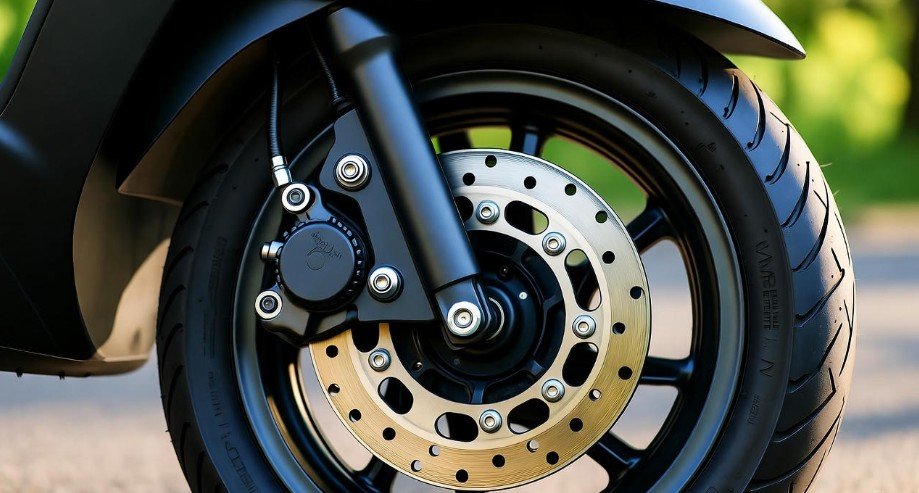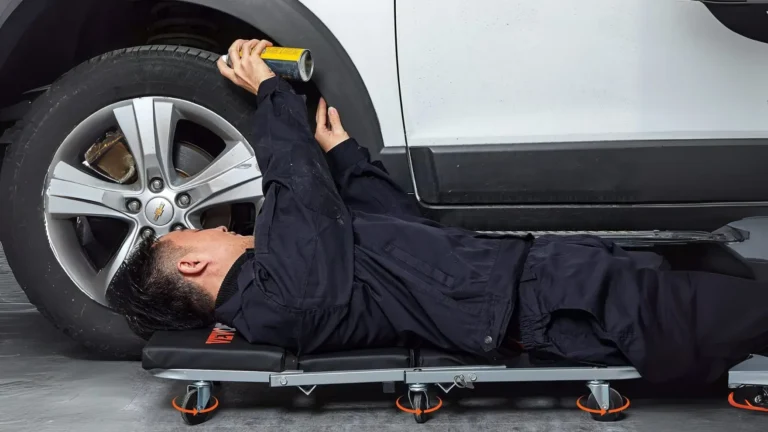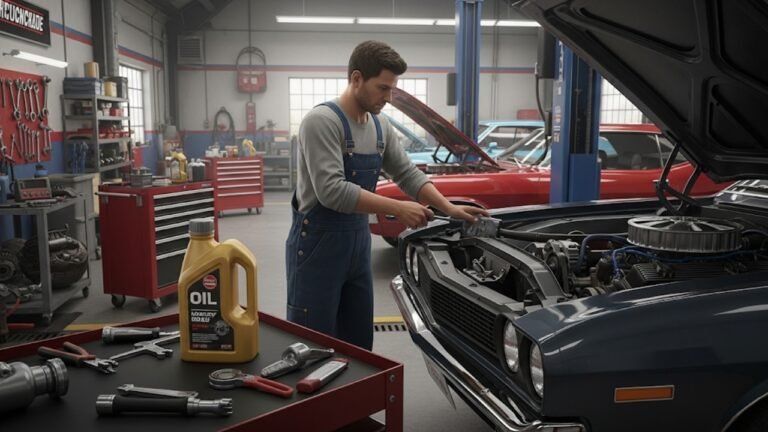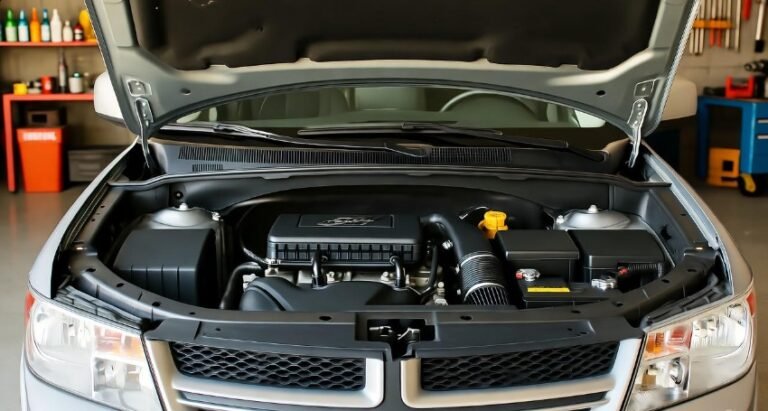Which is Better Drum or Disc Brakes in Scooter?

For most riders, disc brakes offer superior stopping power and performance compared to drum brakes on scooters, providing better control and safety, especially in demanding conditions.
Key Takeaways
- Disc brakes generally provide stronger, more consistent stopping.
- Drum brakes are simpler, often more affordable, and require less maintenance.
- Disc brakes perform better in wet conditions.
- Drum brakes are more protected from dirt and debris.
- Choose based on your riding style and priorities.
When you’re looking at scooters, you’ll often see two main types of braking systems: drum brakes and disc brakes. Deciding between them can feel a little technical, but understanding the basics makes all the difference for your safety and riding experience. Many riders wonder, “which is better drum or disc brakes in scooter?” It’s a common question, especially for those new to scooters or looking to upgrade. Both systems have their strengths and weaknesses, and the best choice for you depends on how and where you ride. This guide will break down drum vs. disc brakes in a simple, easy-to-understand way, so you can make an informed decision for your next scooter.
Understanding Scooter Braking Systems
Brakes are arguably the most critical safety feature on any vehicle, and scooters are no exception. They are the components that allow you to slow down or stop completely. The two primary types you’ll encounter on scooters are:
Drum Brakes: These are a more traditional braking system found on many scooters, especially smaller or more budget-friendly models. They operate with brake shoes that press outward against the inside of a rotating drum attached to the wheel hub.
Disc Brakes: This system is generally considered more modern and offers improved performance. It consists of a rotor (a metal disc) attached to the wheel hub and a caliper that squeezes brake pads onto the rotor to create friction and slow the wheel.
The performance difference between these two systems can significantly impact your confidence and safety on the road. Let’s dive deeper into how each one works and what that means for you as a rider.
How Drum Brakes Work
Imagine a metal can (the drum) attached to your scooter’s wheel. Inside this can are curved pieces of material (the brake shoes). When you apply the brake lever, a cable or hydraulic fluid pulls a cam mechanism. This cam pushes the brake shoes outward, pressing them against the inner surface of the rotating drum.
The friction between the shoes and the drum slows the rotation of the wheel, and thus, your scooter. It’s a self-energizing system, meaning the rotation of the drum helps to push the shoes harder against it, increasing braking force with speed. However, this can also lead to a less consistent feel.
Pros and Cons of Drum Brakes
Drum brakes have been around for a long time, and for good reason. They are a tried-and-tested technology with several advantages, but also some notable drawbacks.
Advantages of Drum Brakes
- Cost-Effective: Drum brake systems are generally less expensive to manufacture, which often translates to a lower purchase price for scooters equipped with them.
- Simplicity: Their design is relatively straightforward, making them easier for some mechanics to service.
- Durability & Protection: The enclosed nature of the drum protects the brake shoes and drum from external elements like dirt, dust, and water, potentially leading to a longer lifespan in harsh conditions.
- Even Wear: Because the brake shoes press against the entire inner surface of the drum, wear can be more uniform across the shoe material.
Disadvantages of Drum Brakes
- Lower Stopping Power: Compared to disc brakes, drum brakes typically offer less aggressive and less powerful stopping. This can be a critical factor in emergency situations.
- Heat Dissipation Issues: The enclosed drum can trap heat generated during braking. Overheating can lead to brake fade, where braking performance significantly diminishes.
- Performance in Wet Conditions: Water can get trapped inside the drum, reducing friction and making the brakes less effective until they dry out, which can be hazardous.
- Less Modulation: It can be harder to achieve fine control over the braking force with drum brakes. The braking can sometimes feel more “grabby” or less progressive.
- Maintenance Complexity (for some): While simpler in concept, accessing and replacing the shoes can sometimes require removing the wheel, and adjustments can be tricky to get just right.
How Disc Brakes Work
Disc brakes operate on a different principle. A flat metal disc, called a rotor, is bolted to your scooter’s wheel hub and rotates with it. Mounted on the scooter’s frame is a caliper, which houses brake pads. When you squeeze the brake lever, hydraulic fluid (in most modern systems) or a cable pushes the brake pads inward, clamping them onto the rotor.
This clamping action creates friction, converting the scooter’s kinetic energy into heat and slowing the rotor, and thus the wheel. The open design of disc brakes allows for much better airflow, which helps in cooling the rotor and maintaining consistent braking performance.
Pros and Cons of Disc Brakes
Disc brakes are the standard on most high-performance vehicles and many modern scooters due to their superior performance characteristics.
Advantages of Disc Brakes
- Superior Stopping Power: Disc brakes provide significantly stronger and more reliable braking force, which is crucial for rider safety, especially at higher speeds or when carrying a passenger or cargo.
- Excellent Heat Dissipation: The open design allows for excellent airflow, preventing the buildup of heat and significantly reducing the risk of brake fade, even during repeated hard braking.
- Better Performance in Wet Conditions: Water is easily shed from the rotor and pads, allowing for more consistent and effective braking even when wet.
- Improved Modulation and Feel: Disc brakes offer a more precise and progressive feel at the lever, allowing riders to control braking force more effectively and comfortably.
- Easier Maintenance (for replacement): Replacing brake pads is generally a simpler and quicker process with disc brakes, often not requiring wheel removal.
Disadvantages of Disc Brakes
- Higher Cost: Disc brake systems are typically more expensive to manufacture and implement, which can increase the initial cost of a scooter.
- Exposure to Elements: The open design means rotors and pads are more exposed to dirt, debris, and salt, which can lead to increased wear and potential corrosion if not maintained properly.
- Potential for Noise: Squeaking or grinding noises can sometimes occur with disc brakes, especially if the pads or rotor are dirty or worn.
- Caliper/Rotor Damage: The exposed rotor and caliper are more susceptible to damage from impacts.
Drum vs. Disc Brakes: A Direct Comparison
To help you visualize the differences, here’s a table summarizing the key aspects of drum and disc brakes for scooters:
| Feature | Drum Brakes | Disc Brakes |
|---|---|---|
| Stopping Power | Moderate to Good | Excellent |
| Performance in Wet | Reduced Effectiveness | Good, with quick recovery |
| Heat Dissipation | Poor | Excellent |
| Brake Fade Susceptibility | High | Low |
| Modulation/Feel | Less Precise | Precise and Progressive |
| Cost | Lower | Higher |
| Maintenance Complexity | Can be involved for some tasks | Pad replacement is simpler |
| Protection from Elements | Good (Enclosed) | Poor (Exposed) |
| Durability (unaffected by elements) | Good | Good, but susceptible to corrosion/wear from elements |
| Typical Scooter Use | Entry-level, smaller scooters, rear wheels | Mid-to-high-end scooters, performance scooters, front wheels |
Which is Better Drum or Disc Brakes in Scooter for You?
The answer to “which is better drum or disc brakes in scooter” isn’t a one-size-fits-all. It truly depends on your individual needs and priorities as a rider. Here’s a breakdown to help you decide:
Choose Drum Brakes If:
- Budget is a Primary Concern: You’re looking for an affordable scooter for light commuting or recreational use where extreme braking performance isn’t a top priority.
- Low-Speed, Gentle Riding: You primarily plan to ride at low speeds in calm urban environments with little traffic and minimal need for sudden stops.
- Simplicity and Low Maintenance: You prefer a system that might require less attention, especially in terms of brake pad wear and tear due to environmental factors.
- Rear Wheel Only: Many scooters use a drum brake on the rear wheel in conjunction with a disc brake on the front, offering a balance of cost and performance.
Choose Disc Brakes If:
- Safety and Performance are Paramount: You want the best possible stopping power for added confidence and security, especially in emergencies.
- Varied Riding Conditions: You anticipate riding in diverse weather (including rain) or traffic situations where reliable braking is essential.
- Higher Speeds or Heavier Loads: You plan to ride at higher speeds, carry a passenger, or transport cargo, all of which increase stopping distances and demand more from your brakes.
- Smooth, Controllable Braking: You value the ability to modulate brake force precisely for a comfortable and controlled ride.
- Performance Scooters: If you’re looking at a scooter designed for sportier riding or better overall handling, disc brakes are almost always standard.
Common Scooter Brake Configurations
It’s important to note that many scooters don’t use the same type of brake on both wheels. You’ll often see these configurations:
- Front Disc, Rear Drum: This is a very common setup on many mid-range scooters. The front wheel provides the majority of the stopping power, and a disc brake offers excellent performance there. The rear drum brake is simpler, cheaper, and still provides adequate stopping assistance and stability.
- Front Disc, Rear Disc: Found on higher-performance or premium scooters, this configuration offers the best possible braking performance and control for both wheels.
- Front Drum, Rear Drum: Typically found on the most basic and affordable scooters, often for very light urban use.
For most riders in the USA, especially navigating varying road conditions and traffic, a front disc brake is highly recommended for its superior safety benefits. You can learn more about essential scooter maintenance from resources like the National Highway Traffic Safety Administration (NHTSA).
Pro Tips for Scooter Brake Care
No matter what type of brakes your scooter has, proper care ensures they perform at their best. Here are a few tips:
- Regular Inspections: Visually check brake pads and rotors (if applicable) for wear. Look for cracks or excessive thinning.
- Listen to Your Brakes: Squealing, grinding, or strange noises are warning signs that something needs attention.
- Check Brake Fluid (Disc Brakes): Ensure the brake fluid reservoir is at the correct level and that the fluid is clean. Old fluid can lose its effectiveness.
- Keep Them Clean: While drum brakes are more protected, keeping the area around disc brake components free of excessive dirt and grime can help.
- Test Brakes After Washing: After cleaning your scooter, gently apply the brakes a few times to ensure they are dry and functioning correctly.
Frequently Asked Questions (FAQ) about Scooter Brakes
Q1: Which type of brake is safer on a scooter?
Disc brakes are generally considered safer due to their superior stopping power, better performance in wet conditions, and resistance to brake fade. They allow for quicker, more controlled stops.
Q2: Can I convert my scooter from drum brakes to disc brakes?
While technically possible, it’s usually a complex and expensive modification that requires significant mechanical expertise and potentially changes to the wheel hub, suspension, and frame. It’s often more practical to purchase a scooter that already has disc brakes if that’s what you desire.
Q3: How often should I check my scooter’s brakes?
It’s recommended to check your brakes at least every few months, or before any long rides. More frequent checks are advised if you ride daily or in harsh conditions.
Q4: What does “brake fade” mean?
Brake fade is a condition where brake performance diminishes significantly, usually due to overheating. This is more common in drum brakes, especially after repeated hard braking.
Q5: Are drum brakes bad?
Drum brakes are not inherently “bad.” They are a functional and cost-effective braking system suitable for many applications, particularly on lighter scooters or for less demanding use. However, they are not as performant as disc brakes.
Q6: Do I really need disc brakes on my scooter?
For riders primarily in urban areas at low speeds with predictable traffic, drum brakes might suffice. However, for enhanced safety, better control, and peace of mind, especially if you ride faster, in varied weather, or in dense traffic, disc brakes are highly recommended.
Conclusion
When debating “which is better drum or disc brakes in scooter,” the modern consensus leans towards disc brakes for their enhanced safety, superior stopping power, and consistent performance across various conditions. Disc brakes offer a more confident and controlled riding experience, crucial for navigating the diverse roads of the USA. However, drum brakes remain a viable and cost-effective option for entry-level scooters or riders with very specific, low-demand usage. For most riders seeking a balance of safety, reliability, and performance, a scooter equipped with at least a front disc brake is the smarter choice. Understanding these differences empowers you to choose a scooter that best aligns with your riding style and safety priorities.




